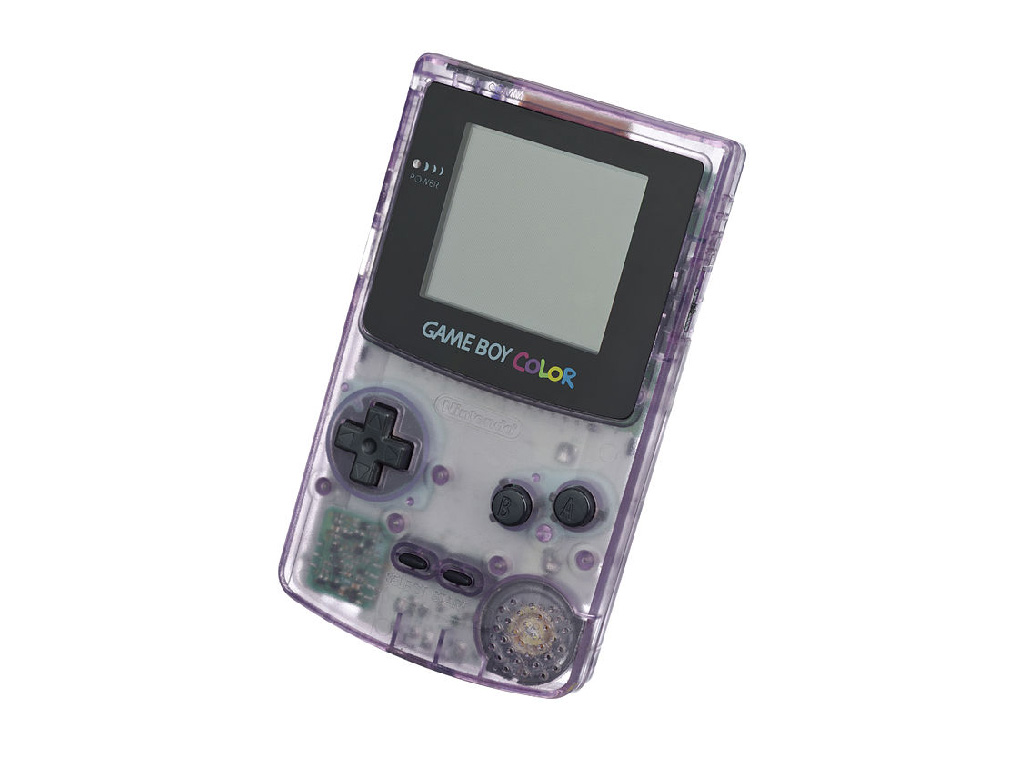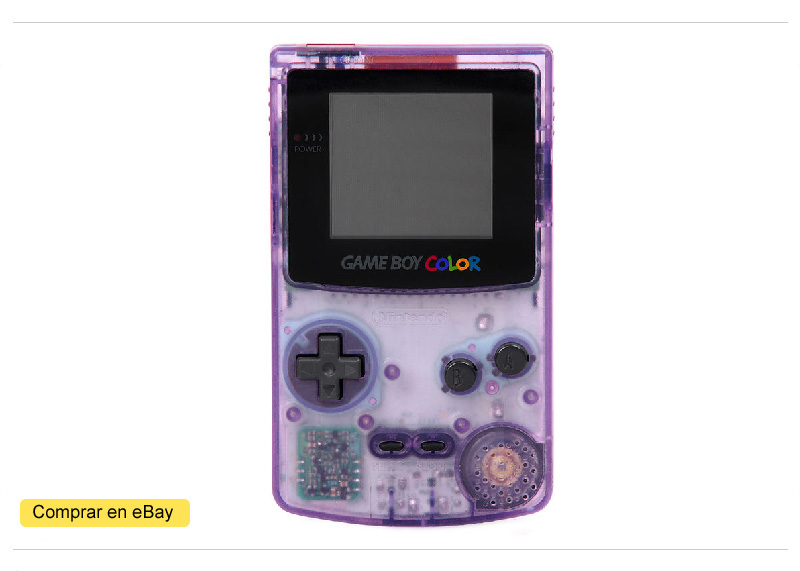Game Boy Color was the logical evolution of the original Game Boy. Launched in 1998, what could initially be considered a Game Boy 2.0, was actually a transition console marked and conditioned by the enormous success of the “Game Boy” brand.
More powerful than the original console, similar in size to the Game Boy Pocket, 100% compatible with the Game Boy system’s catalog of games, and featuring a full-color display, displaying up to 56 on-screen colors from a 32,768 palette, the GBC had a short but intense life, placating all the competition that dared to approach Nintendo’s fiefdom.
| COMPANY: | Nintendo |
| CONSOLE GENERATION: | 5TH GENERATION OF CONSOLES |
| RELEASE DATE: | 21 de octubre de 1998 en Japón |
| GAMES CATALOG: | 917 Game Boy Color |
| SOLD UNITS: | 49 million units worldwide |
| LAUNCH PRICE: | 8,900 yen in Japan |
| PROCESSOR: | Sharp LR35902 de 8 bits at 4MHz/8MHz |
| FORMAT: | Cartridge |
| BUY IT ON EBAY: | https://ebay.us/KhwNsW |
If you are interested in the Game Boy video game system, I strongly recommend that you visit the complete analysis of the original Game Boy system, in which you will find all the information, history, context and development of Nintendo’s most legendary portable console: The Nintendo Game Boy.
- History of the Game Boy Color
- Game Boy Pocket Developer Interview
- Price of a Game Boy Color handheld console, how much did it cost?
- Collecting the Game Boy Color
- Buy a Game Boy Color
- TOP Retro: Best Game Boy Color Games
- Nintendo Game Boy Color FAQ
- Technical characteristics of the Game Boy Color
Game Boy Color, the Game Boy 2?
Released in late 1998, the Game Boy Color was Nintendo’s transition console between the classic GB and the Game Boy Advance. Although at first we could consider it as a Game Boy 2.0, once we know its history and development, we can say that Nintendo’s color handheld was an evolution of the original console.
Yes, an evolution that took a great leap forward and a few steps back (such as the Game Boy Light’s lack of backlighting), but due to the enormous weight of the Game Boy brand and concept, little or nothing could innovate as a “new console”, hence it is normally considered to be just another version of the Game Boy system.
But beware, let’s not make a mistake and underestimate this console… We are talking about the arrival of color in the Game Boy universe and, therefore, in the world of portables in general, being one of the greatest demands of players, since the times in which they freaked out with the visual spectacle of the Game Gear and Atari Lynx (plugged into the current, yes), it became a reality, finally, in 1998.
Nine years to bring color to our palms, too long? Not for Nintendo. In the Kyoto company since the days of President Hiroshi Yamauchi and his economic Famicom, there has always been an obsession with the price of its products, which are focused on the general public. If we add to this the art of balance established by master Gunpei Yokoi since the 1980s, we obtain as a result that the GBC was launched at the exact moment it should have been launched.
THE PERFECT BALANCE, THE NINTENDO PHILOSOPHY Although Yamauchi placed great importance on the price of its consoles and products, Nintendo's development teams followed the philosophy of "perfect balance" in the portable market, between the following factors: Price, Features, Dimensions, Batteries and Production / Logistics. Therein lies the key to Nintendo's success in the field of portables and why, it has been the queen of portables for decades. How did they get it? Using mature technologies, already very cheap and sometimes giving them a new and innovative use. Only in this way could the 5 elements converge in a product suitable for the masses, with more than enough features to offer us infinite worlds of fun.
Could they have made and developed a Game Boy Color much sooner? Yes, of course, and with a backlit screen, the technology had been available since the mid-1980s, but the final product would have been very similar to the Game Gear or Atari Lynx: Expensive, huge in size and with about 3 hours of battery life, a commercial failure. The Game Boy Color was released when the technology had come down in price enough to incorporate it. As simple as that.
If we look at the data, the sales confirm the good decision-making by Nintendo, both regarding the balance and features of the console and the time of its launch: 49 million units sold for a console, which was even sold in advertising campaigns as an evolution of a console that the vast majority of players already had, they are scandalous figures.
Comparison of Game Boy consoles: Game Boy Color, much more than a Game Boy
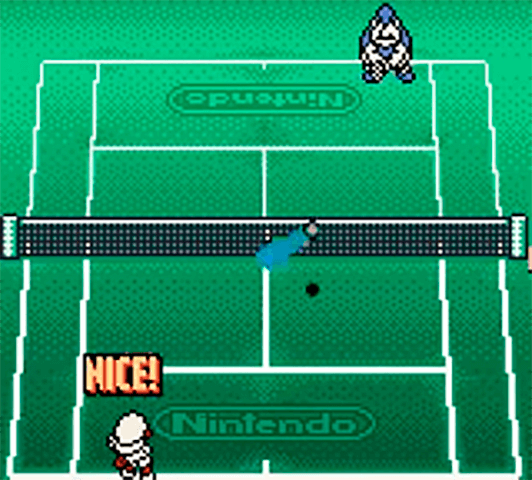
As we have already mentioned, despite being a highly conditioned evolution, the GBC was able to stand out from its sisters by offering many improvements over the previous GB. Let’s first see the technical comparison followed by a list of various improvements:
| COMPARISON | Game Boy | Game Boy Pocket | Game Boy Color |
|---|---|---|---|
| CPU | 8 Bits / 4,19 MHz | 8 Bits / 4,19 MHz | 8 Bits / 8 MHz, |
| RAM | 8 Kbytes | 8 Kbytes | 32 Kbytes |
| Dimensions | 148 mm x 90 mm x 32 mm | 127,6 mm x 77,6 mm x 25,3 mm | 133,5 mm x 78 mm x 27,4 mm |
| Weight | 220 g | 150 g | 138 g |
| Energy consumption | 70 – 80 mA per hour // 4 AA batteries (1.5 V) | 80 – 90 mA per hour // 2 AAA batteries (1.5 V) | 70 – 80 mA per hour // 2 AA batteries (1.5 V) |
| Game time | From 24 to 30 hours | From 8 to 10 hours | 10 hours approx. |
| Screen type | LCD | Pantalla de cristal líquido (LCD) | LCD TFT de nueva generación |
| Screen size | 4,7 cm x 4,3 cm | 4,8 cm x 4,4 cm | 4,4 cm x 4 cm |
| Screen colors | 4 | 4 | 56 de una paleta de 32768 |
| Resolution | 160 x 144 píxeles | 160 x 144 píxeles | 160 x 144 píxeles |
| Contrast | YES | YES | No |
| Volume | YES | YES | YES |
| Stereo headphone port | YES | YES | YES |
| Multiplayer port | YES | YES(slim) | YES (slim) + Infrarrojos |
- The new “Super Mobile LCD” screen improved visibility outdoors and, as it is not backlit, increased battery life.
- The infrared communication port in no case replaced the Cable Link of all life, but it was used by some games to carry out small-scale data exchanges.
- The new home screen had a shorter duration than the original.
- It was the first Nintendo machine to have a strap hole.
- Similar to Super Nintendo‘s Super Game Boy, the Game Boy Color has 12 selectable color schemes to apply to the original console’s monochrome games, some of them optimized for specific games.
And obviously, exclusive games: The best technical features of the Game Boy Color, together with its good sales, made the industry focus on developing exclusive video games that used all its power. The GBC didn’t just “colorize” our old classics or enjoy some improvements with hybrid games, the Game Boy Color exploited 8-bit power like no one else, launching games that were close to being considered 16-bit.
As we will see in its corresponding section below, the GBC set the bar very high to be a console within the 8-bit Game Boy system. The experience of the programmers in the system, together with the new features and its color screen, offered endless great titles.
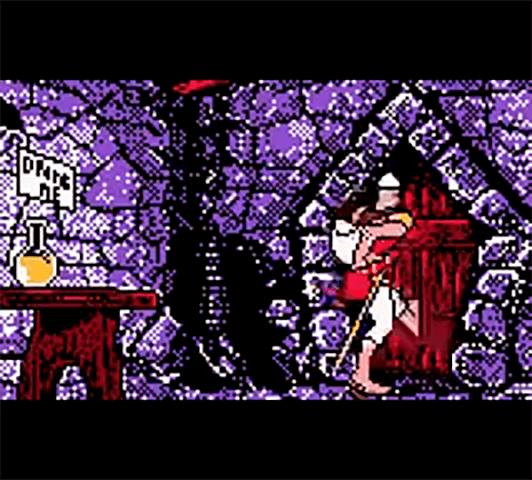
El impulso al sistema Game Boy
“Only Nintendo kills Nintendo”, in the following graph we can see how it was none other than the Game Boy Advance, which “killed” after its launch to the 8-bit Game Boy system. Due to its late release, the Game Boy Color had a very short life compared to its siblings, the GBA was very well received and consequently, companies stopped developing video games for the GBC in a very short time.
A handheld released in 1998, it ran out of new games in 2003. While this is a very common occurrence in the console industry, in those periods of peak turmoil/releases, the GBC played a big role in revitalize the Game Boy brand. Let’s see the graph:
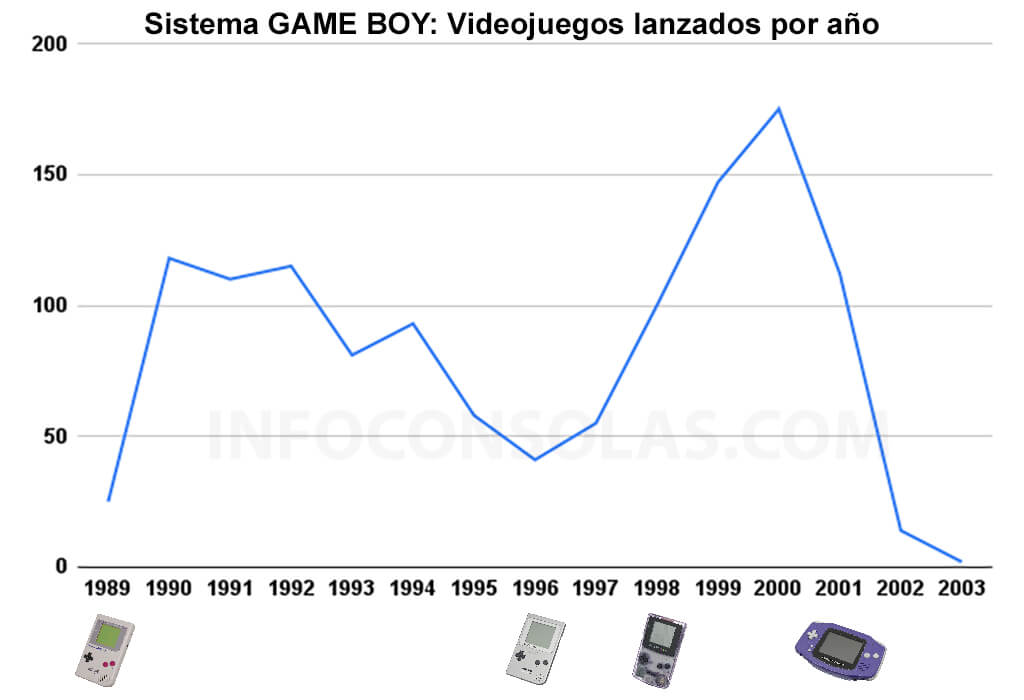
While the Game Boy Pocket has already started the comeback of a system that seemed destined to die in 1996, due in large part to the perception of the time when portable consoles were considered “children’s games” (competing against PSX, Saturn and PC), together with the technological stagnation that the success of the Game Boy itself caused, it was with the arrival of the GBC when the Nintendo portable system came to have the best number of games published per year, launching more than 15 video games in the years 1999 and 2000… Crazy!
The Game Boy Color relaunched the system and provided it with a new CONTINUE, while also giving the original Game Boy an extra LIFE, as many studios chose to release games compatible with both GB and GBC consoles, thereby targeting a larger audience. much older. Consequently, we can say that the GBC revived the GB, keeping it commercially alive until the system’s death in 2003. Quite an achievement.
Game Boy Color and the Pokemon phenomenon
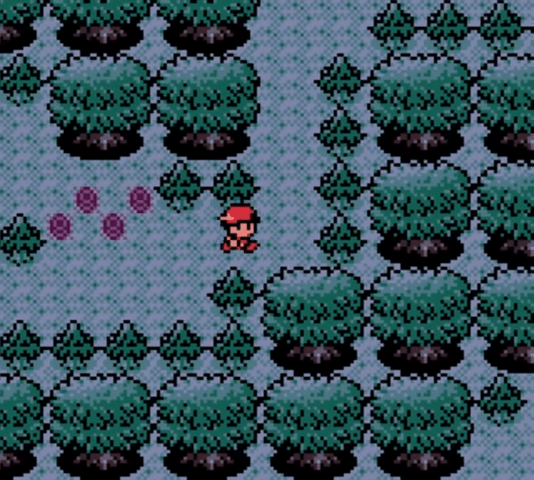
If in the previous points and sections we have been able to see how the GBC was a great support to the Game Boy system, both in units sold and in games released, it would not be fair to attribute all this success to the GBC alone:
In the year 1996 the world witnessed the Pokemon phenomenon that we all know, in short the thing worked as follows: If you wanted to play Pokemon, you had to have a Game Boy. As simple as that. This fact caused the Game Boy to rise from its “ashes”, with the perfect combo Pokemon + Game Boy Pocket (and Game Boy Light in Japan), leading to the release of a Game Boy Color Pikachu. And what happened afterwards?
In 1999 Nintendo released Pokemon Gold and Pokemon Silver, and a year later in 2000, Pokemon Crystal. The three titles took advantage of the benefits of the Game Boy Color, the result was an unstoppable machine that swept everything in the portable market. Nobody could with that combo, we had to wait until 2002 for Pokemon Ruby and Sapphire to be released for Game Boy and Game Boy Color users to migrate to the new GBA.
Game Boy Color competition
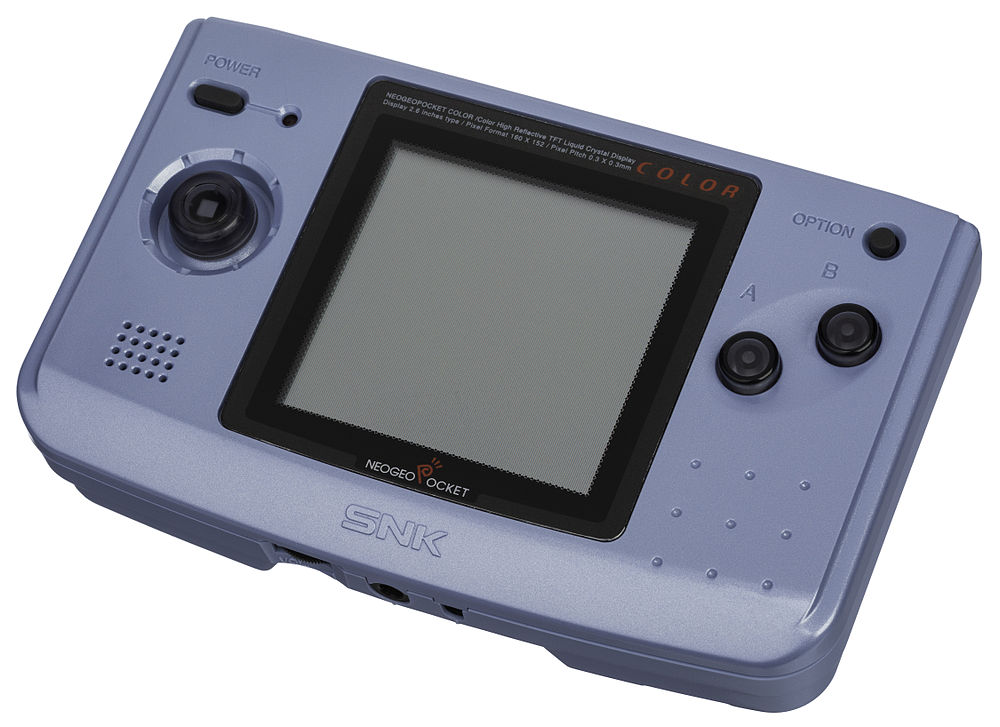
On a global level, the Game Boy Color had no competition from the rest of the hardware development companies, Nintendo passed the roller and the reign of the Game Boy system in the field of portable consoles was total, dictatorial, supreme.
And in Japan? It is true that at the end of the 90’s there were companies that ventured to fight against a system that they considered technologically outdated… And they were right, the search for balance and the use of “mature” components and technologies caused the Game Boy system from the outset did not stand out for its aspects and technical features, something that at the end of the 90’s was more evident than ever.
SNK dared with its 16-bit Neo Geo Pocket in 1998, to launch the color version the following year, a great console that did not have the success it deserved and succumbed to the Game Boy Color from the start. Bandai also decided to do battle with a console designed by Gunpei Yokoi himself, which, of course, had perfectly balanced features: The WonderSwan (1998).
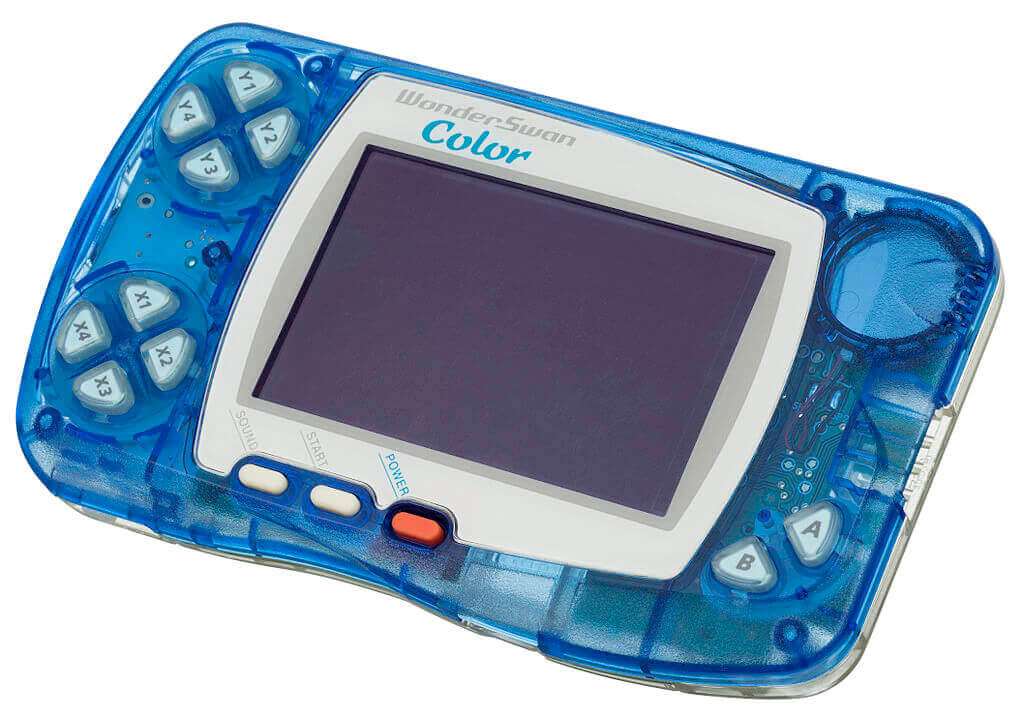
The launch of a color console by Nintendo caught Bandai by surprise, who quickly developed its corresponding color version, the WonderSwan Color (2000). In a fantastic catalog of games linked to manga and anime, its exclusivities, its low price, its minimum battery consumption (1 AA battery) and its 16-bit power, positioned the WonderSwan Color above the Game Boy Colour. And they were right.
The WonderSwan Color was the first handheld console that really, as a whole, looked down on a console from Nintendo’s Game Boy system, quite an achievement. Unfortunately for Bandai, in March 2001 Nintendo launched its 32-bit handheld game console, the Game Boy Advance.
The development of the GBC
When we talk about retro consoles, very rarely can we count on direct testimonials from the development teams of the machines to which we dedicate a large part of our lives. Why did they use a certain component? Why didn’t they include a concrete improvement? There are many questions that are usually left unanswered by manufacturers.
Fortunately, on this occasion, Nintendo Japan itself interviewed the three main figures of the Game Boy Color development team, thus offering us the context of production and the vision of the entrails of Nintendo itself, which is no small thing. Here is the summary of the most interesting points:
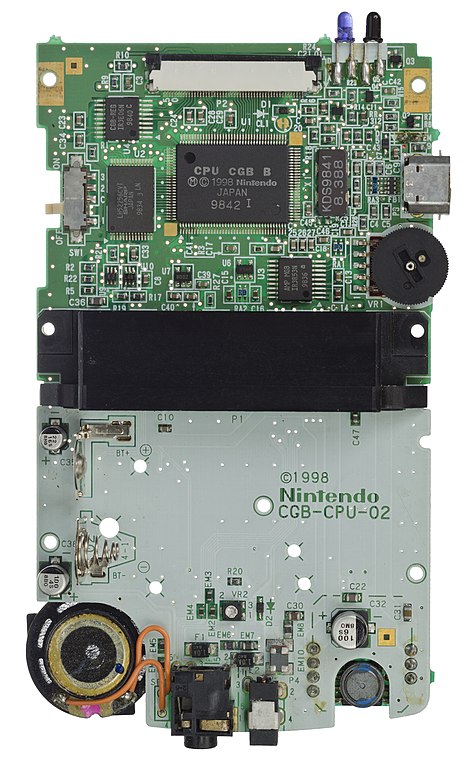
STORU OKADA | Manager of Nintendo R&D1. Responsible for the Nintendo GameBoy Color Project.
As early as 1992, Satoru Okada himself worked on a color Game Boy project, leading to the manufacture of a prototype: An inexpensive color LCD screen was used for its time, which needed backlighting, making it impossible to solve the problems of screen size. the console (too big) and the battery life of about 1 hour (are you also thinking about the Game Gear and Atari Lynx?). For these reasons its commercialization was postponed .
It was not until October 1997 (be careful with the development times!), that Satoru himself was aware of the cheapening of reflective color LCD screens, which did not need a backlight, which is why the Game project was resumed. Boy Colour.
The development of the Game Boy Color lasted only 10 months, when it is normal for it to be years for a new console. Consequently, he had to pick up the canceled 1992 project. Another big problem was ensuring backwards compatibility with the more than 1,000 existing Game Boy games. A first option was to maintain the features of the original console, with the only addition of color, but in R&D1 they wanted to create a more powerful console… Quite a dilemma.
Making a new and powerful console from scratch, with its own catalog, was something easy to achieve for a team like R&D1… The difficulty in this case was keeping the entire catalog of the original Game Boy compatible, while at the same time the benefits of the machine were increased to have the aforementioned own catalogue. Satoru Okada found the perfect balance with an ingenious decision, a processor capable of going at 2 speeds, the original of the GB and that of the GBC (at twice the speed).
Unfortunately for Satoru, even having solved the problem in the best way, taking into account the many restrictions and conditions (time, 1992 prototype and backward compatibility), this decision did not give him any reputation, since the general public is unaware of the difficulties of a development, valuing more the great generational jumps for example.
At all times, foreign markets were taken into account, both in the exterior design and the colors that arrived abroad, as well as in the console logo. Cost reduction was also a key factor, an example being the failure to silk-screen the A,B, SELECT and START buttons.
Satoru Okada himself was surprised at how long the original Game Boy was having (10 years in 1999), recognizing that after 10 years it was time to include color in Nintendo’s portable fiefdom.
KENICHI SUGINO | Industrial designer of the GameBoy Color. Nintendo R&D1.
Kenichi Sugino was the person who designed the shape of Nintendo’s Game Boy Color. Unlike the Game Boy Pocket, with which the priority was to dwarf the original console, in the case of the GBC the “feel of holding it” in our hands, its ergonomics, its size, its touch, its shape… The result of this priority is the rear curve that the console has.
Regarding size, a balance focused on improving the gaming experience was sought, serving as an example not to follow, the evolution of card-sized calculators, which are very comfortable to carry but very cumbersome to work with, due to their small size. of the buttons. Consequently, the concept of “miniaturization” would in no case be a priority.
As a designer, Kenichi Sugino also had his limitations in not being able to create a console from scratch: Having to be compatible with all the software in the Game Boy catalog, the GBC had to have at least one crosshead, two buttons and one input. of compatible cartridges. As if this were not enough, there was a cost limit price for the console to be accessible to the majority of the public.
Color was a key element due to the internationalization of the product, and the intention to cover both the male and female public. The purple color was the safest neutral bet, although finally the console was published in many more colors, some of them exclusive like the Game Boy Color: Berry red and turquoise blue.
Following internet criticism of the Game Boy Pocket’s back design, a much more elaborate back design was developed. It may seem trivial, but at a bus stop or sitting on the subway, it is the part of the machine that the rest of the people see (gamer posture). Another conditioning factor was the obligation in the North American market to put a sticker with the contact telephone number, which requires leaving a space reserved for this purpose.
As a tribute to the late Gunpei Yokoi, Kenichi integrated a hole for a strap to pass through. Since the development of the first Game Boy, Gunpei Yokoi asked to put a hole for a strap, thus anticipating decades to what would be integrated with mobile phones from the year 2000.
When it comes to safety, the Game Boy Color is designed to withstand being dropped and even stepped on, something most of us have experienced more than once!
HITOSHI NAKAI | Reliability evaluation and design of electronic circuits. Nintendo R&D1.
Hitoshi Nakai was responsible for checking if the original Game Boy’s game catalog would work with the new Game Boy Color. To test all the classic GB games, he had the help of the Super Mario Club, forming a team of 8 people who were joined by workers from the factory in the city of Uji (Kyoto, Japan).
Although the differences between the Game Boy Pocket and the Game Boy Color may initially be hard to see, since the GBC was developed to be able to play the previous catalog of video games, the improvements are substantial other than color: Its CPU can go up to double speed, so in certain games the GBC version has exclusive phases and/or extras. RAM has been multiplied x4, allowing game developers to put many more enemies on the screen simultaneously, with the addition of infrared communication, the use of which will depend on game developers.
The opinions of the users were very relevant to the design, with the elimination of the contrast control being a recurring doubt. The reason was the implementation of an automatic contrast corrector, which adjusts it in such a way that it is always in optimal conditions, so it no longer has to be adjusted by the user.
Finally, Hitoshi Nakai invited players to look for those games from the original catalog, which have their own color scheme, greatly improving the gaming experience.
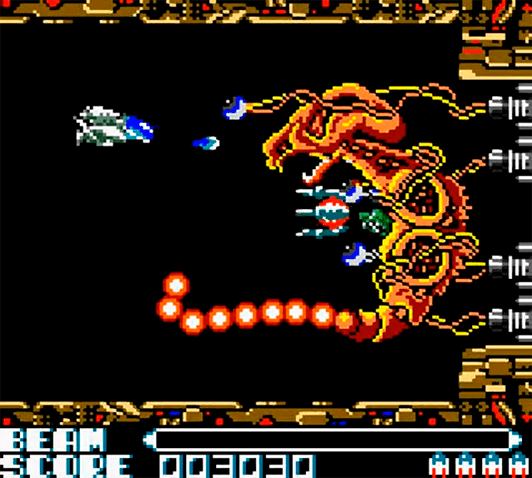
The price of the Game Boy Color, how much did it cost?
At Infoconsolas we always like to compare the starting price of the consoles with their contemporaries and more direct competition. In this case, you can see the prices of a new Game Boy Color compared to the rest of the portables of the time.
| CONSOLE | RELEASED | LAUNCH PRICE | COMPANY |
| Game Boy Pocket | 1996 | 6.800 yenes | Nintendo |
| Game Boy Light | 1998 | 6.800 yenes | Nintendo |
| Game Boy Color | 1998 | 8.900 yenes | Nintendo |
| Neo Geo Pocket | 1998 | 7.800 yenes | SNK |
| WonderSwan | 1999 | 4.800 yenes | Bandai |
| Neo Geo Pocket Color | 1999 | 8.900 yenes | SNK |
| New Neo Geo Pocket Color | 1999 | 6.800 yenes | SNK |
| WonderSwan Color | 2000 | 6.800 yenes | Bandai |
| Game Boy Advance | 2001 | 9.800 yenes | Nintendo |
As you can see, the GBC did represent an evolution and therefore an increase in the price that we were used to in Nintendo releases, something that would happen in the same way with the GBA a few years later… Even so, its price was within the market.
On May 14, 1999, Nintendo modified the recommended price of its console to 6,800 yen, thus approaching the price of the Game Boy Pocket of those years (3,800 yen), and conditioning the starting price of the WonderSwan Color and New Neo Geo Pocket Colour.
Collecting the Nintendo Game Boy Color
Like the rest of its sisters, in recent years the Game Boy Color has positioned itself as one of the objects of desire for most nostalgic and retro console collectors. The possibility of remembering in a single console, the entire catalog of video games of the Game Boy system in full color, added to the fashion of modding and IPS screens, means that despite the millions of units that were sold, every day it is more difficult to find a console at a non-speculative price.
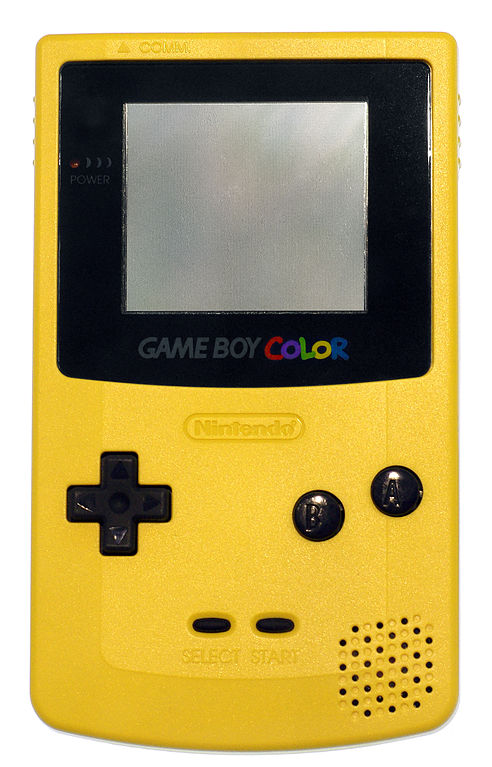
Fortunately, adding the Game Boy Color to our collection of retro video games is still possible without having to sell a kidney, the problem will be found by those who intend to collect their video game catalog:
Assuming that no one in their right mind is looking to get a full set of this machine, the simple fact of looking in good condition for those most popular games, those with the highest quality or the ones we used to play when we were little/young, is practically an impossible mission. (at a reasonable price). The fact of being a console designed for children, together with its cardboard boxes, has caused the vast majority of available games to be loose units or with boxes in a sorry state: Wrinkled, colored and broken at the time by little hands that they just wanted to get the Mario cartridge out.
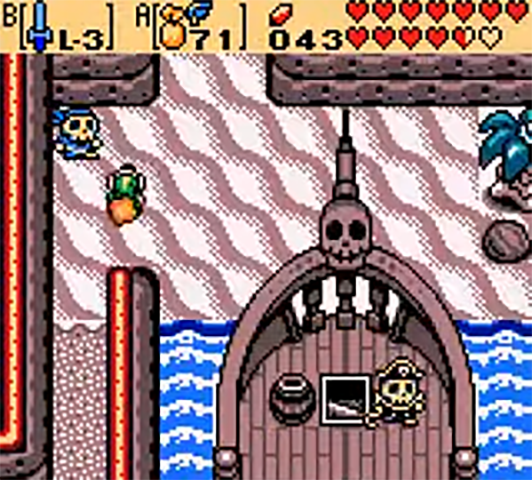
Our “selves” of the past did not think at any time about the present “selves” of the future, scrupulous policemen of the retro who are saddened by the slightest bending of a cardboard box that is more than 30 years old… Who could do retro-punishments! And self-punishments too, for all those who, as a server, gave you a puberty minimalist attack in search of increasing the space of a plywood shelf, throwing all the cardboard boxes in the trash… 🙁
For all of you who collect retro consoles and video games to play actively, without giving great importance to the state of conservation of video games, the Game Boy Color is a magnificent console to enjoy hundreds of games that will transport you to a time when everything was easier… Let the nostalgia run!
Buying a Game Boy Color on eBay
Prices to buy a new Game Boy Color console are currently insane, so purists should prepare their wallets. However, there are different much more accessible options such as buying a second-hand Game Boy Color, a used Game Boy of a lifetime.
In the latter case, thankfully the console itself is prepared for bumps, drops, moves and World War 3, so finding a working original used Game Boy Color to buy is relatively easy. Parallel to the evolution of retro fashion, there has been a trend to refurbish and modify retro consoles, so you will see that in the second-hand Game Boy Color market many of the offers are for refurbished or modified consoles.
Before continuing, it is best that you see this link to eBay, where you will find a list of Game Boy Color consoles for sale at the moment, and their corresponding updated prices (and state of conservation).
Restored consoles, new, old, used, with boxes, without boxes, with scratches, stickers, pristine… The offer to buy a second-hand Game Boy Color, as you have already seen, is huge, but they are no longer cheap. The fashion of modding and restoration has caused that as soon as a unit comes out at a good price it is bought by professionals who are dedicated to modifying them.
Consequently, we have to be patient and start hunting for the retro, weekly searches to be aware of the current market price and tracking in “Buy It Now”. Only in this way, we will be sure to buy at a reasonable price at the right time. There have been no bargains for years, so let’s at least enjoy the pleasure of hunting and searching for retro.
STOP COLLECTOR! If you’ve seen the console listing on eBay, I want to say THANK YOU. Since 2004, the objective of Infoconsolas is to contribute to preserving the history of consoles and video games through our own collection of systems and the hours of work invested in this very website.
Being an eBay partner listing, if you buy a game or console, you will be helping Infoconsolas in the preservation of video game culture, so thank you very much again!
TOP: Best Nintendo GBC Handheld Games
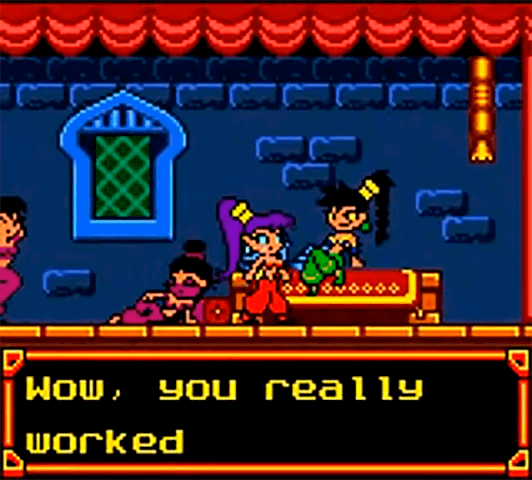
At Infoconsolas we are big fans of Mr. Jarm, a well-versed collector of retro consoles and video games who, on his YouTube channel, has among his many contents, the DEFINITIVE TOPS of most of the most popular consoles in history. A brave man who ventures to suffer the fury and calamities of thousands of fanboys and haters ordering and selecting the best games on the systems? ALL OUR RESPECT.
And as proof of this, we leave you with a magnificent video by JARM entitled “The 20 best GAME BOY COLOR games of all time (THE DEFINITIVE TOP)”, in which you will be able to see everything that Nintendo’s Game Boy Color could and can still offer us. Enjoy them!

FAQ GB Color of Nintendo
Next you have the section of questions, answers and curiosities of the Game Boy Color, a series of technical questions and curiosities about the already more than classic Nintendo portable console.
The release date is October 21, 1998 in Japan.
November 18, 1998.
November 23, 1998.
At launch 8,900 yen.
56.
It has a palette of 32768 colors.
No, he had already left Nintendo.
Cartridge ROM.
On the part of the GBC yes, on the box and the cartridge itself it is indicated if they are compatible or not for the holders of the GB and GBP.
2 AA batteries, of the small ones.
133,5 mm x 78 mm x 27,4 mm.
138 grams.
Approximately 10 hours of play and up to 20 hours if the batteries are alkaline.
160×144 pixels, maintains that of the classic GB.
From TV Animation One Piece: Maboroshi no Grand Line Boukenki! Released on June 28, 2002 for the GB and GBC Color (compatible).
Doraemon no Study Boy: Kanji Yomikaki Master, released on July 18, 2003.
Yes, by link cable but with its corresponding adapter.
Yes, all Game Boy Color and Game Boy games are region free.
Technical characteristics of the GB Color video game console
Here are the technical characteristics of the GB Color:
- CPU: LR35902 4MHz/8MHz (8MHz for color mode cartridges).
- RAM: 32k bytes (RAM can be expanded by 128kbytes using the cartridge).
- VRAM: 16k bytes.
- ROM: Maximum 64 Mbits (8 Mbytes).
- Screen: 2.3-inch SHARP TFT LCD.
- Definition: 160 x 144 pixels.
- Colors: 56 simultaneous colors on screen from a palette of 32768 colors.
- Simultaneous Screen Sprites: 40 sprites each 8×8 or 8×16 (Selectable)
- Sound: 4-channel stereo (stereo only through headphones).
- Power: 2 AA batteries.
- Battery life: approximately 10 hours of play.
- Dimensions: 133.5mm x 78mm x 27.4mm
- Weight: 138g.
- Communication: slim port and infrared communication.
- Technical characteristics obtained from wikipedia and the official Nintendo website.
Fuentes y enlaces externos
- https://www.nintendo.co.jp/nom/9902/b_box/index.html
- Console graphic resources: https://commons.wikimedia.org/wiki/User:Evan-Amos

